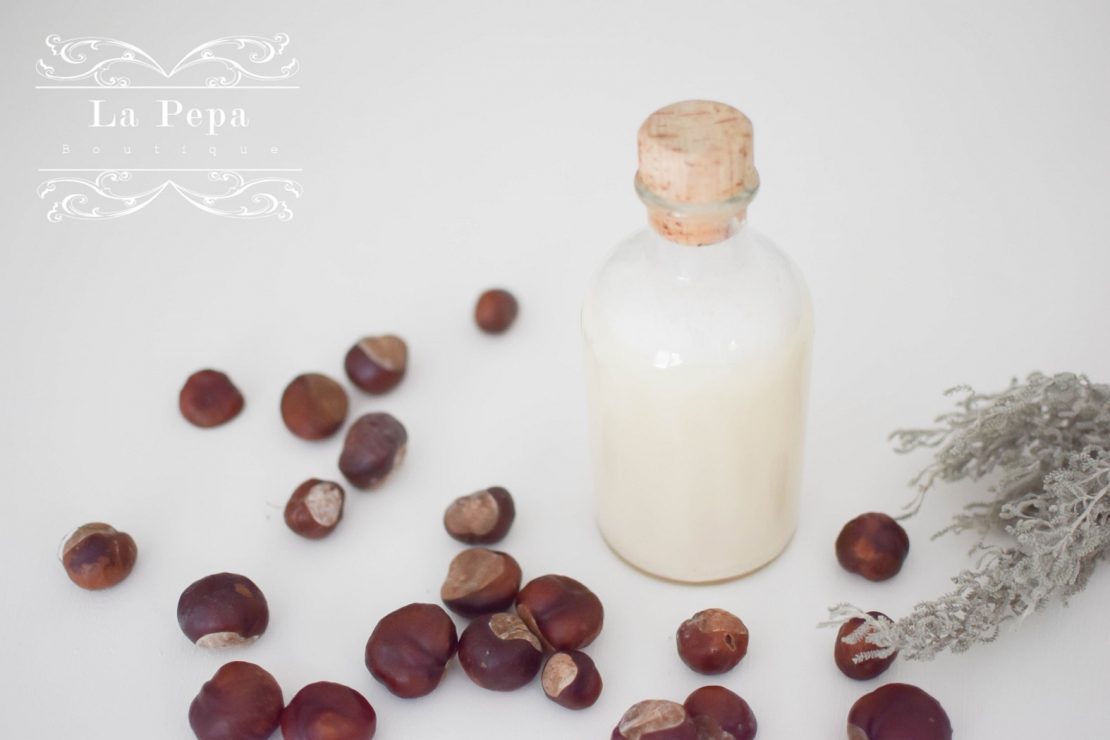If you are interested in Zero Waste I am sure you have already heard about Chestnut detergent. It took the internet by storm. If you are familiar with Soap Nuts, chestnuts work similarly – they both contain saponins, a soap-like chemical compound (sapo is Latin for soap). Soap Nuts have been used to wash laundry or to make body wash in India for generations. The growing demand for Soap Nuts has led to the extensive export, which in turn has led to soapnuts becoming too expensive for locals to afford. So why to buy Soap Nuts when we have local Chesnuts! And the best part – they are free! No wonder I decided to give it a go.
Jeigu kažkiek domitės Zero Waste gyvenimo būdu, esu tikra, kad jau girdėjote apie Kaštonų Ploviklį, kadangi paskutiniu metu visi apie jį kalba. Jeigu žinote Soap Nuts, tai kaštonai veikia panašiai – jų abiejų sudėtyje yra saponino, [lot. sapo – muilas], organinio junginio, kuris labai putoja vandeyje. Ištisos kartos Indijoje Soap Nuts naudojo kaip drabužių ploviklį bei kūno prausiklį. Tačiau padidėjusi Soap Nuts paklausa įtakojo gausų eksportą, dėl ko vietiniams Soap Nuts tapo per brangūs. Tad kam pirkti Soap Nuts, kuomet turime vietinių ir netgi nemokamų kaštonų? Nenuostabu, kad juos panorau išbandyti ir aš.



During one of our walks in the park, we collected plenty of chestnuts so I was able to make a detergent. There are a few ways to make a detergent, however, I am sharing the one I found to be the quickest and easiest. Start by crushing chesnuts – wrap then in a towel and crush using a hammer.
Vieno pasivaikščiojimo po parką metu, su dukryte prisirinkome pakankamai daug kaštonų, tad turėjau galimybę paeksperimentuoti su kaštonų plovikliu. Yra keletas skirtingų būdų jo gamybai, tačiau dalinuosi tuo, kuris mano nuomone yra greičiausias ir paprasčiausias. Pradėkite nuo kaštonų sutraiškymo – įvynioję į rankšluostį, griebkitės plaktuko.

I would suggest you to start with a small amount so you can test the detergent and how you like it – 8 to 10 chestnuts should be enough. Once you crushed them, put them in the blender and pulse until they will be grated in smaller pieces.
Rekomenduočiau pradėti su nedideliu kiekiu, kad galėtumėte išbandyti ir įvertinti ploviklį – nuo 8 iki 10 kaštonų pilnai pakanka. Sutraiškytus kaštonus sudėtkite į blenderį ir susmulkinkite.

Take some blended chesnuts to the jar and fill with warm water. For 1/2 jar of chestnuts, I used a cup of water. Let the mixture steep for about 30 minutes to release the saponins. It is important to mention, that steeping time will depend on the size of the pieces, so if you crushed chestnuts into quarters instead of blending, you will have to soak them overnight. Strain the mixture and your detergent is ready!
Susmulkintus kaštonus suberkite į indelį ir užpilkite šiltu vandeniu. Pusei indelio kaštonų – pilnas indelis vandens. Leiskite pamirkti maždaug 30 minučių – tiek laiko reikia, kad išsiskirtų saponinas. Svarbu paminėti, kad mirkymo laikas priklauso nuo to, kaip smulkiai sutraiškėte kaštonus – jeigu vietoj blenderiavimo, juos tiesiog sutraiškėte į kelias dalis, mirkti reikės palikti per naktį. Nukoškite mikstūrą ir jūsų ploviklis paruoštas!



How to use it?
Use it as any liquid detergent. You would need approximately 1/4 to 1/3 cup per wash. It is completely odourless however, you can add essential oils to achieve the desired scent. If you live in an area with hard water you should add a splash of white vinegar. The liquid detergent can be kept in the fridge for a week.
As Soap Nuts didn’t work for white clothes, I haven’t used Chesnut detergent for white clothes either. The chestnut liquid detergent is quite gentle and perfect for delicates such as wool and silk, however, it won’t work for heavy stains. For me, it’s not an issue as I adopted a habit to treat stains straight away (for example, wine stain will easily come off in the wash of you pretreat it with salt/soda immediately). I think this liquid detergent is perfect for those who want fewer chemicals in their home and choose natural options as often as possible.
Naudokite kaip bet kurį skystą ploviklį. Skalbimui reikia ketvirtadalio puodelio. Kaštonų ploviklis visiškai bekvapis, tačiau galite įpilti savo mėgiamo eterinio aliejaus. Jeigu jūsų gyvenamojoje vietoje kietas vanduo – rekomenduojama įpilti šiek tiek acto. Skystas ploviklis gali būti laikomas šaldytuve savaitę laiko.
Kadangi Soap Nuts man nepakankamai gerai išskalbdavo baltus drabužius, šio kaštonų ploviklio jiems irgi nebandžiau. Kaštonų ploviklis yra gana švelnus, todėl puikiai tinka vilnai ir šilkui, tačiau stiprių dėmių jis neįveiks. Man tai nėra didelė problema, kadangi aš jau įpratau dėmes apdirbti vos tik joms atsiradus (pvz vyno dėmės puikiai išssiskalbia, jeigu jas iškart apdirbsite su druska arba soda). Manau, kad šis ploviklis puikiai tinka norintiems savo namuose naudoti kuo daugiau natūralių priemonių ir išvengti chemikalų.

I have dried some blended chestnuts in the sun and stored in a jar for the future use. Is very simple to make these in batches – when you are ready to do laundry, take some of the dried horse chestnuts, soak them, steep, strain, and your detergent is ready!
The detergent can be used for cleaning too (I tried to clean sink and it worked!) and I am definitely planning to prepare some more. What about you? Are you going to give this a go?
Dalį sumaltų kaštonų išdžiovinau saulėje ir sudėjau į indelį vėlesniam naudojimui. Iš karto lengviau pasidaryti didesnį kiekį ir tuomet, prieš skalbimą tiesiog užmerkite šiek tiek džiovintų kaštonų šiltame vandenyje, nukoškite ir jūsų ploviklis paruoštas.
Žinau, kad ploviklį galima naudoti ir įvairiems namų valymo reikalams, nors pati to dar nebandžiau. Tiesa, prisiminiau, jog esu plovusi kriauklę su juo – puikai veikia! Tačiau tikrai planuoju prisirinkti daugiau kaštonų ir prisidžiovinti jų žiemai. O kokia jūsų nuomonė? Ar bandėte? O gal bandysite?

PS.: Please note, only horse chestnuts can be used for the detergent (not edible) and not sweet chestnut.
PS.: Tik kaštonai gali būti naudojami ploviklio skysčio gamybai, kaštainiai tam netinka.
Love,
E.








